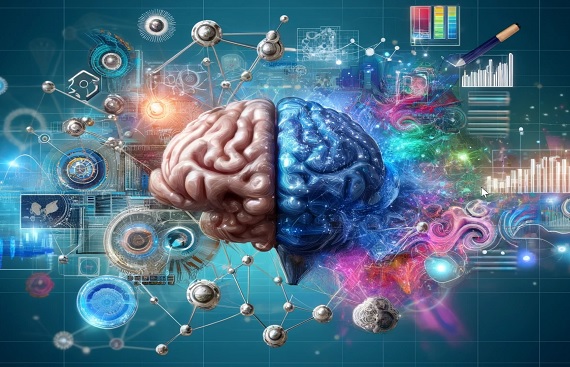Neuromarketing: Harnessing Brain Science to Decode Consumer Behavior

In the current world where marketing is ever-changing, it is very crucial for any organization that wants to have a competitive edge in the market to understand the factors that influence the consumer’s decision unconsciously. Neuromarketing, a discipline that has developed rather recently as the intersection of neuroscience and marketing, provides a useful tool for gaining knowledge about consumers’ brain reactions to advertisements, goods, and brands. Neuromarketing shows activity that is not visible in other research approaches; thus, companies can create sound tactics as well as enhance customer experiences and engagement by targeting the psychological aspects of consumer choice.
How Neuromarketing Operates
Neuromarketing uses the most sophisticated neuroscience techniques such as fMRI, EEG, and eye-tracking to study the brain and physiological reactions. These technologies enable marketers to gather responses at the micro level such as feelings and focus that may not be observed by other techniques. For example, Indian companies such as Nestlé have adopted neuromarketing to improve product packaging and advertisement techniques. Using EEG and eye-tracking studies, Nestlé was able to measure the real-time reactions of consumers to different packaging and advertisements, which helped to create more efficient campaigns targeted at the Indian consumer.
Applications of Neuromarketing in Advertising
![]()
Neuromarketing is comparatively a recent concept that entails the use of neuroscience information to develop campaigns likely to attract users. Neuromarketing employs different techniques of brain scanning and physiological responses to find out which of the visual and emotional appeals will draw attention and respond in a certain way. By this, marketers are able to alter the appearance of the ads, the type of messages to employ and the time to share the content. Thus, the brands can create adverts that will prompt more profound and meaningful consumer responses, capture viewers’ interest and therefore have higher conversion rates. This not only increases the effectiveness of advertising but also the brand commitment because consumers are provided with more effective and relevant experiences.
Key Techniques Used in Neuromarketing
fMRI (Functional Magnetic Resonance Imaging): It measures the brain activity through changes in blood flow. For instance, Big Bazaar, an Indian retail chain, employed fMRI to enhance store layouts and found out that the positioning of high-margin products influenced the attention of customers and sales.
EEG (Electroencephalography): Records electrical brain activity to gauge consumer engagement. Myntra, an Indian e-commerce platform, utilized EEG to test website designs, leading to a redesign that improved user experience and boosted conversion rates.
Galvanic Skin Response (GSR): Measures skin conductivity changes due to emotional arousal. Coca-Cola India employed GSR to evaluate ad effectiveness, pinpointing the most emotionally engaging ads to guide future campaigns.
Facial Coding: Uses facial gestures to interpret feelings and reactions. Lakmé, an Indian cosmetic company, employed facial coding during a product launch event and modified its marketing messages accordingly.
Retail and E-Commerce Impact through Neuromarketing
Neuromarketing has a major impact on retail and e-commerce because it has enhanced the way consumers communicate and boosted sales. In retail, neuromarketing provides knowledge on how to arrange the store and the surrounding environment to make the shoppers stay longer and buy more. For instance, the Indian-based e-commerce company Flipkart relies on neuromarketing approaches to study users’ behavior and their emotional reactions on the company’s website. By analyzing the customer behaviour on the site as well as their response to the various features, Flipkart optimizes the site to provide a better user experience while shopping online. This also enhances the experience of the customer while at the same time increasing the rate of conversion, a clear example of how neuromarketing can be used to enhance both the physical and virtual space of the stores.
Impact of Neuromarketing on Digital Marketing
![]()
Neuromarketing has revolutionized digital marketing by providing more information on the emotional reaction to digital content. As content marketing, social media, and video advertising go through their changes, neuromarketing tools enable marketers to see how various components – pictures, titles, and the CTA – play out in the consumers’ heads. This capability helps digital marketers to better tailor their content marketing initiatives in a bid to achieve better reception and relevance among the target consumers. It is therefore useful for marketers to know which aspects of their campaign generate positive or negative feelings so that they can adjust their strategies to suit consumer preferences, which in turn will result in more effective campaigns and higher ROI.
"Digital marketing will play a bigger role but relevance of mediums and maintaining a balance between short term and long term objectives is critical", says Aishwarya Pratap Singh, Head - Marketing, ITC Limited.
The Future of Neuromarketing
From this, it can be seen that the future of neuromarketing holds even more interesting prospects in store through the application of technological innovations. AI and machine learning are expected to bring significant changes in the field by improving the evaluation of brain data and also the ability to make changes in marketing strategies based on the response of consumers. Further, advances in virtual and augmented reality will open new possibilities to investigate consumers’ behavior in the context of VR/AR environments. Further development of neuromarketing will lead to the provision of more localized and context-sensitive marketing solutions, which will remain consistent with the best ethical practices and consumer protection.
Conclusion: Therefore, neuromarketing can be considered a revolutionary concept that may help companies explore the hidden motives behind consumers’ actions. Its uses range from fine-tuning advertising models to redesigning the retail and electronic commerce environments. It is possible to use knowledge of the emotional and cognitive reactions to design better marketing experiences. However, it is imperative that marketers are aware of these ethical issues, exercise caution and act appropriately in the application of these methods. With neuromarketing’s progression, it becomes possible to combine the knowledge of how the brain works with the actual application of its marketing, thereby enhancing the bond between the brand and the consumer while remaining loyal to the concept of free will.
Read More News :
Airtel Business Partners with Italy's Sparkle for Blue-Raman Submarine Cable Capacity

.jpg)

